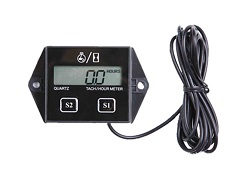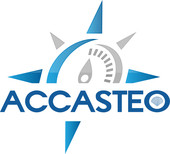Propeller search
How do I find my propeller references ?
No products
What propeller to choose for an outboard motor ?
HOW TO CHOOSE THE RIGHT PROPELLER FOR YOUR OUTBOARD MOTOR ?
Case No. 1: You are looking to replace a propeller that is already adapted to your boat.
Disassemble the propeller, then inspect the hub (central cylindrical part) and its sides. You should find a reference engraved there, such as: 13 1/2 X 14 for example, where 13 1/2 is the diameter and 14 the pitch, expressed in inches. As a reminder, 1 inch = 2.54 cm
IDENTIFICATION OF THE DIAMETER AND PITCH ENGRAVED ON THE PROPELLER HUBhere, a Yamaha 13 1/2 X 14 propeller seen from the outside (rear of the propeller) |
 |
You can also find a manufacturer reference of the type 68V-45941-00-EL at Yamaha.
If you found this information, you can find our propellers by brand here :
Our propellers by brand :
| PROPELLER FOR ENGINE | PROPELLER FOR ENGINE | PROPELLER FOR ENGINE | PROPELLER FOR ENGINE |
 |  |  |  |
If in doubt, do not hesitate to CONTACT US
Case No. 2: You need to equip an engine purchased without a propeller, you have not found the reference of the existing propeller, or you are re-motorizing a boat with another engine.
In all cases, the choice of the propeller must be made according to the optimal operating speed of the engine, and in the usual operating conditions. This is in order to have an optimal engine performance, to limit its wear and to avoid engine breakage.
All outboard engines have an optimal operating range, set by the manufacturer generally between 4500 and 6000 rpm. You will find this information a little further down.
Usual operating conditions ? It is simply, when you take the boat out, how is it loaded most of the time ? Do you always leave with 2 friends, with the cooler full of ice, and a full tank of fuel ?
If so, the goal must be that with the new propeller the engine takes its turns well with this load on board.
Important note: too low a speed causes premature and serious wear of the engine. With too high a speed, the engine can simply break.
Optimal operating speed of your engine by brand :
| OPTIMAL ENGINE SPEED | OPTIMAL ENGINE SPEED | OPTIMAL ENGINE SPEED | OPTIMAL ENGINE SPEED |
 |  |  |  |
Once you have found this information, do a max speed test with the boat, trimming at full throttle to find the max RPM before cavitating. Memorize the maximum RPM reached.
Your engine does not have a rev counter? You will have to equip yourself with one, even temporarily. If you cannot find one, we have a universal model available on our site.
 | You can order the rev counter here. |
Concrete example :
If your engine is a Yamaha F80 for example. It must turn between 5000 and 6000 rpm. So ideally 5500.
Your engine, at full throttle, only takes 4800 rpm. The propeller pitch is therefore too long, you must choose a “shorter” propeller. If the current propeller is a 13 X 19, it can be replaced by a 13 X 17. That is 2 inches less.
For 1 inch less pitch, we will gain 300 rpm and conversely, for 1 inch more pitch, we will lose 300 rpm.
So with the 13 X 17, we should gain 600 rpm, and find ourselves in the middle of the range, in the optimal regime.
To summarize regarding the pitch:
If your engine does not take enough rpm, you must choose a smaller pitch. If the motor revs too much, you need to choose a larger step.
Professional tip :
Determine more precisely the speed your engine takes at full throttle using the trim.
WARNING: carrying out a speed test requires caution, to be done as far as possible with 2 people. One is at the helm, the other will watch the rev counter. Always wear a life jacket. Respect the speed in the 300m zone. Carry out your test in calm seas.
In normal boat load conditions, and in perfect safety, leave the 300m zone with the engine in the lowest possible position, then gradually accelerate to full throttle. Once at full throttle, raise the engine with the trim switch on the box, by pressing for 1 second until the start of the increase in speed.
Listen to the engine, then raise the engine again by pressing the switch for 1 second. At one point it will increase significantly in revs, and the boat will pick up more speed. Continue to raise until the engine "rumbles", you will also feel a vibration. Don't worry, it's propeller cavitation, nothing serious for a few moments if you don't exceed the maximum speed...
Lower the engine by small pressures to no longer hear this noise, and see what speed you are at. If you are at the manufacturer's optimum speed, your propeller is perfectly adapted. Otherwise, you now have a precise idea of which propeller will allow you to reach the right engine speed.
If in doubt, do not hesitate to CONTACT US
